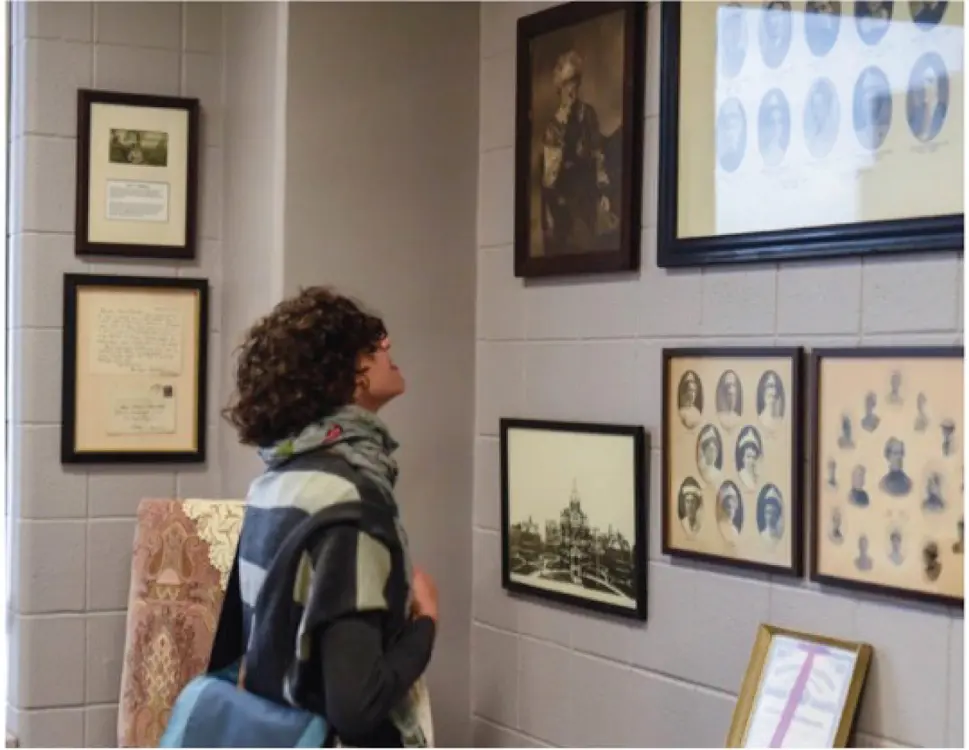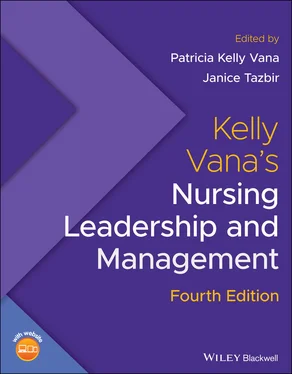27 Frogner, B. & Anderson, G. (2006). Multinational comparisons of health systems data, 2005. The Commonwealth Fund. Retrieved from www.commonwealthfund.org/∼/media/Files/Publications/Chartbook/2006/Apr/Multinational%20Comparisons%20of%20Health%20Systems%20Data%20%202005/825_Frogner_multinational_comphltsysdata%20pdf.pdf
28 Ginsburg, P. B. (2003). Can hospitals and physicians shift the effects of cuts in Medicare reimbursement to private payers? Health Affairs, W3, 472–479.
29 GovTrack. (2010). Health care and education reconciliation act of 2010. GovTrack. Available at www.govtrack.us/congress/bill.xpd?bill=h111-4872
30 IOM. (2003a). Priority areas for national action: Transforming health care quality. Available at www.iom.edu/?id=35961
31 IOM. (2003c). Keeping patients safe: Transforming the work environment of nurses. Available at www.iom.edu/?id=35961
32 IOM. (2003d). Patient safety: Achieving a new standard for care. Available at www.iom.edu/?id=35961
33 IOM. (2005). Performance measurement: Accelerating improvement. Available at www.iom.edu/CMS/2955.aspx?show=0;3#LP3
34 IOM. (2006). Preventing medication errors: Quality chasm series. Available at www.iom.edu/?id=35961
35 Jha, A. K., Li, Z., Orav, E. J., & Epstein, A. M. (2005). Care in U.S. hospitals—The Hospital Quality Alliance program. New England Journal of Medicine, 353(3), 265–274.
36 Kahn, C. N., Ault, T., Isenstein, H., Potetz, L., & Van Gelder, S. (2006). Snapshot of hospital quality reporting and pay‐for‐performance under Medicare. Health Affairs, 25(1), 148–162.
37 Kaiser Family Foundation (KFF) and Health Research and Education Trust. (2007). Employer health benefits: 2007 annual survey. Publication number 7672. Retrieved from www.kff.org
38 Kaiser Family Foundation (KFF) and Health Research and Education Trust. (2009). Employer health benefits: 2009 annual survey. Publication number 7936. Retrieved from www.kff.org
39 Kaiser Family Foundation (KFF). (2006). The uninsured: A primer. Key facts about Americans without health insurance. Publication number 7451‐02. Retrieved from www.kff.org
40 Kaiser Family Foundation (KFF). (2007a). Trends in health care costs and spending. Menlo Park: Kaiser Family Foundation. Retrieved from www.kff.org/insurance/upload/7692.pdf
41 Kaiser Family Foundation (KFF). (2007b). Health care spending in the United States and Organisation for Economic Co‐operation and Development (OECD) countries. Retrieved from www.kff.org/insurance/snapshot/chcm010307oth.cfm
42 Kaiser Family Foundation (KFF). (2008). Addressing the nursing shortage. Retrieved from www.kaiseredu.org/topics_im.asp?imID=1&parentID=61&id=138
43 Kaiser Family Foundation (KFF). (2010). Summary of new health reform law. Publication Number 8061. Retrieved from www.kff.org
44 Kaiser Family Foundation (KFF). (2005). Navigating Medicare and Medicaid, 2005: Medicaid. Washington, DC: Kaiser Family Foundation. Accessible at www.kff.org/medicare/7240/medicaid.cfm
45 Kaiser Family Foundation (KFF). (2006). The uninsured: Key facts about Americans without health insurance. Washington, DC: Kaiser Family Foundation. Accessible at www.kff.org/uninsured/upload/7451-021.pdf
46 Mundinger, M. O. (2005). Who's who in nursing: Bringing clarity to the doctor of nursing practice. Nursing Outlook, 53, 173–176.
47 National Bureau of Economic Research. (2006). Healthcare expenditures in the OECD. Retrieved from www.nber.org/aginghealth/winter06/w11833.html
48 National Healthcare Disparities Report (NHDR). (2008). Rockville, MD: Agency for Healthcare, Research and Quality. Retrieved from www.ahrq.gov/qual/nhdr08/nhdr08.htm
49 National Healthcare Quality Report (NHQR). (2009). Rockville, MD: Agency for Healthcare, Research and Quality. Retrieved from www.ahrq.gov/qual/nhqr09/nhqr09.htm
50 Organisation for Economic Co‐operation and Development. (2008). OECD health data 2008: How does Japan compare. Paris: Organisation for Economic Co‐operation and Development. Retrieved from www.oecd.org/document/46/0,3343,en_2649_33929_34971438_1_1_1_1,00.html
51 The Commonwealth Fund. (2017, July 13). New 11‐country study: U.S. Health Care System Has Widest Gap Between People with Higher and Lower Incomes. Retrieved from www.commonwealthfund.org/press-release/2017/new-11-country-study-us-health-care-system-has-widest-gap-between-people-higher
52 U.S. Department of Health and Human Services. (2000). Healthy people 2010: Understanding and improving health (2nd ed.). Washington, DC: U.S. Government Printing Office. Retrieved from www.usnews.com/news/best-countries/quality-of-life-rankings
53 U.S. Department of Health and Human Services. (2006). Annual update of the HHS poverty guidelines. Accessible at http://aspe.hhs.gov/poverty/06fedreg.pdf
54 Ware, J. E., & Sherbourne, C. D. (1992). The MOS 36‐item short form health survey I: Conceptual framework and item selection. Medical Care, 30, 473–478.
55 WHO & UNICEF. (2018). A vision for primary health care in the 21st century: towards universal health coverage and the Sustainable Development Goals. Retrieved from https://apps.who.int/iris/handle/10665/328065
56 World Health Organization (WHO). (2000). The world health report 2000—Health systems: Improving performance (pp. 27–35). Geneva: World Health Organization.
57 WHO. (2008). Cuba's primary care revolution: 30 years on. Bulletin of the World Health Organization, 86(5), 321–416. Retrieved from www.who.int/bulletin/volumes/86/5/08-030508/en/index.html
58 World Population Review. (2019). Best healthcare in the World population. Retrieved from http://worldpopulationreview.com/countries/best-healthcare-in-the-world
59 Yong, P., Saunders, R., & Olsen, L. (2010). Healthcare imperative: Lowering costs and improving outcomes: Workshop series summary [National Institutes of Health]. doi: www.nap.edu/catalog/12750.html
3 Nursing Leadership and Management in a Historical Context
Brigid Lusk, PhD, RN, FAAN
Midwest Nursing History Research Center, University of Illinois at Chicago, College of Nursing, Chicago, IL, USA
 Rebecca Singer, new doctoral graduate, examines historical artifacts.
Rebecca Singer, new doctoral graduate, examines historical artifacts.
Source: Midwest Nursing History Research Center, University of Illinois at Chicago College of Nursing.
Why study nursing history? The answer lies in the work we do every day with the patients, families, and communities we serve. Understanding how early twentieth‐century nursing leaders sought educational advancement in higher education, advocated health care policy reforms, supported immigrant populations, and developed innovative models of care offers much for the profession today.
Sandra Lewenson, PhD, RN, FAAN
Upon completion of this chapter, the reader should be able to:
1 Discuss the founding of nursing.
2 Review the dawn of professional nursing.
3 Discuss visiting nurses and the birth of public health nursing.
4 Review the development of professional nursing organizations
5 Discuss evolving hospital nursing in the 1920s and 1930s.
6 Review evolving of professional nursing in the 1920s and 1930s.
7 Discuss collegiate education in nursing.
8 Review the development of nursing research in the 1950s to the 1970s.
9 Discuss emerging nursing specializations in the 1980s and 1990s.
10 Review historic contributions and future nursing challenges.
You graduated about a year ago, as one of 10 male nurses in your class, and now work in the critical care unit of a major teaching hospital. Most of your work has been on the night shift. One evening, with a few nights off duty coming up, you go out with some friends from college. Talking with them, you realize that they don ' t have a clue about what you do. They joke that you must have entered nursing because of the numbers of eligible women. They have no idea of your responsibilities or your stress when at work. They don ' t know that a few nights back you diagnosed a probable pulmonary embolism and thus saved a young woman ' s life. They don ' t know that you calmed a hysterical man in the waiting room whose wife had just unexpectedly died. Most aggravating is their response when you tell them that you ' re planning to return to college for your doctorate—a PhD or a DNP, you ' re not sure yet—and they look amazed and exclaim “A nursing Dr.! Who knew?”
Читать дальше

 Rebecca Singer, new doctoral graduate, examines historical artifacts.
Rebecca Singer, new doctoral graduate, examines historical artifacts.










